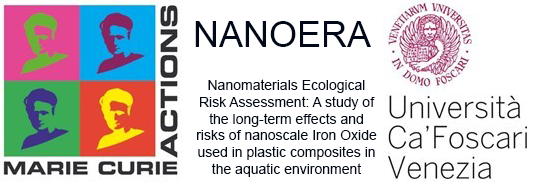NANOERA
Nanomaterials Ecological Risk Assessment (NanoERA): A study of the long-term effects and risks of nanoscale Cu-Phthalocyanine in the aquatic environment
Project number: 660960
Call identifier: H2020-MSCA-IF-2014
Principal Investigators: Dr. ChengFang Pang – fellow, Prof. Antonio Marcomini – supervisor
duration: 03/07/2015 – 02/07/2017
Nanomaterials are part of many consumer products, but the future of the field depends on ensuring their safe use. For example, nanoscale copper phthalocyanine (n-CuPc) is a pigment widely used in paints to enhance automobile coatings and make colors transparent and more appealing to users. This use can potentially lead to n-CuPc release and induce occupational as wel
l as environmental risks.
Presently, very little is known about the biological interactions and the ecological risks of nanoscale Cu-Pchalocyanine. Therefore, the goal of NanoERA is to develop concepts and methods, and to generate data to predict the long-term ecological effects and risks of nanoscale Cu-Pchalocyanine in the aquatic environment and human health.
In order to achieve this, the fellow will analyse how the physicochemical properties of the nanoscale Cu-Pchalocyanine change in environmental (i.e. freshwater and sediment) and biological (cell culture) media and how these changes affect the biological interactions of these materials. The generated (eco)toxicological effects data will be used to derive dose-response relationships and to quantitatively estimate the long-term ecological risks of the nanoscale Cu-Pchalocyanine.
